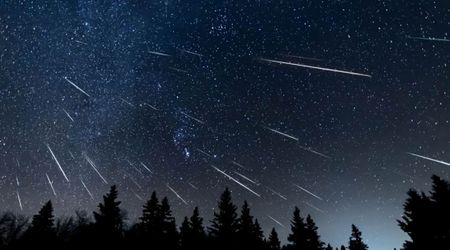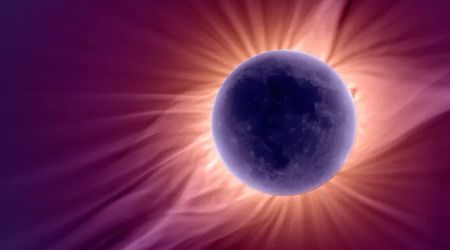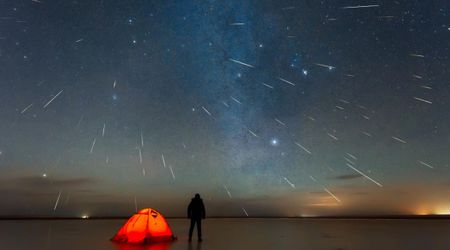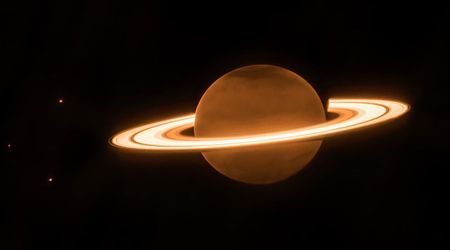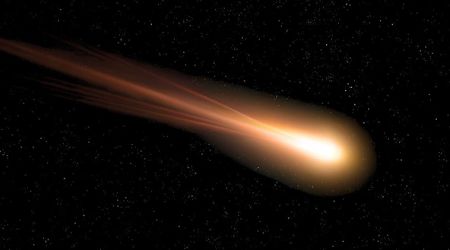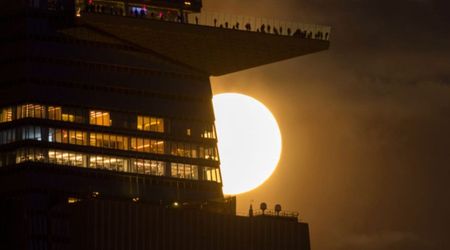jupiter through a telescope

Observing the majestic Jupiter through a telescope is something that often transforms a curious space enthusiast into a fully-fledged amateur astronomer. It can be quite breathtaking to view planets through a telescope and enjoy an almost live image of a celestial body that is millions of kilometres away.






How to find Jupiter
Lucky for us, Jupiter is one of the brightest planets in the night sky which makes it relatively is to spot and track. To the naked eye, Jupiter looks like a bigger than a normal star with the particularity that it does not sparkle as much as a star usually do.
Due to its large size and its high brightness, Jupiter is one of the most observed planets. Through a telescope, the 5th planet of our solar system displays an incredible sight for many amateur astronomers around the world.
Due to its very large orbit around the sun, Jupiter takes around 12 months to travel from one constellation to the other, from our point of view on Earth. It's relatively easy to know where Jupiter should be for a full year. There are a few ways to find Jupiter in the sky, choose which one might interest you below.
- Mobile Apps
- Planetarium Software
- Constellations
- Star Charts
- Go-To Telescopes
Stargazing applications such as Star Walk 2 can be installed on any modern smartphones nowadays. Once you input your location or let the app find it automatically, it will display the view of the night sky. What makes those applications very neat is the fact that they update the position of every celestial object live as they are in front of you. Simply hold the phone in front of you and navigate the night sky. Finding Jupiter should not take longer than a minute.
- To download the application on Android, click here.
- To download the application on the iPhone, click here.
There are a few software that can be used to plan your planetary observation in advance. Stellarium, for example, can be installed on your computer and once you have set up your location and time, it will display the sky as you would see it if you were outside yourself. Using this information, you can plan and see Jupiter’s trajectory across the sky in advance! Stellarium allows you to see the exact position of all celestial objects at any time, you can even set the time to a few weeks ago or a few weeks later.
If you want to see find and see Jupiter through your telescope easily, download Stellarium.
For thousands of years, constellations have helped curious stargazers find their way around the night sky. From our perspective, Jupiter's path will always be inside or close to one of the 12 constellations that form the Zodiac. If you know in which constellation Jupiter currently is, it is just a matter of observing said constellation and sport the extra point of light with your telescope. Star charts can be useful if you are not sure how to find constellations.
Jupiter will be in Sagittarius from November 2019 until September 2020 where it will enter Capricornus.
Star charts are a very handy tool to find your way around the night sky. Although they do not point out the exact position of the planets, amateur astronomers can use it to track and find the constellation in which Jupiter currently resides. Star charts can also help you locate the invisible line across called the “ecliptic” which represent the Sun's apparent path that every planet, including Jupiter, follows.
Go-To telescopes are self-guided telescopes that make celestial objects easier to locate. This technology comes at a higher price but will save you a tremendous amount of time. Finding Jupiter with your telescope will be easy as pressing a button. This type of telescope is equipped with an electric motor as well as a control handset.
The go-to telescope can automatically locate, move and align itself to any target you wish to see. This makes it one of the best planet trackers available that require little to no effort from the amateur astronomer.
How to see Jupiter better in 5 steps
1. Reducing the effect of the atmosphere
If you observe Jupiter with your telescope when it is low on the horizon, the light coming from the planet will go through a longer path in the atmosphere. When Jupiter is higher up in the sky, the light coming from it will have a smaller journey through the atmosphere. This difference can affect the quality of seeing in your home telescope. Try to plan your observing session at a time where Jupiter is ideally positioned in the sky. Where you are located on planet Earth can affect your ability to see Jupiter well - see our example image.


2. Dark skies
Light pollution is an issue that is becoming more and more important these days. This unwanted glow can sometimes be an issue when amateur astronomers try to observe Jupiter in a telescope. The light being cast from street lights upwards into the atmosphere reduces the contrast between the dark background and the targeted planet. Jupiter is quite bright and so is less affected by this but if you can, always chose to use your telescope somewhere with less light pollution.
You can check how light pollution is affecting your area and find a dark site with this online map.
3. Air Turbulence
You can improve the quality of your viewing by carefully choosing the spot on which you will place your amateur telescope. For example, avoid any concrete yard where the sun has been beaming on all day because it will more likely still produce heat during the night and will stir the air above.

We also recommend avoiding observing Jupiter directly above your neighbour’s house as the heat escaping through the roof or chimney may result in a distorted image of the coveted planet.
4. Seeing conditions
The word “seeing” is commonly used among the amateur astronomer community to describe the state of the atmosphere during an observing session. The atmosphere is a giant ball of different gases that moves and swirls around uncontrollably, and that can affect your stargazing session. For example, if you notice that Jupiter appears very blurry through your telescope despite setting everything up perfectly, it’s more likely due to bad “seeing” which means there is a lot of turbulence in the atmosphere.
5. Dark Adaptation & Temperature
Whether you're using a refracting telescope or a reflecting telescope to view Jupiter, your equipment will be affected by the outside temperature. The different metallic parts, as well as the mirrors, may slightly expand or retract depending if it's hot or cold. This can affect the quality of the image you see through the eyepiece of your scope. We recommend leaving your telescope outside for at least 20mins so that it gets used to the temperature.

Your eyes also need adjusting to the dark and giving them time to do so will greatly help you observe Jupiter more efficiently. I usually kill two birds with one stone and leave my telescope to adjust to the temperature and get my eyes to adjust to the dark while having a coffee or hot chocolate.
When is the best time to observe Jupiter in a telescope?
At the beginning of every January, Jupiter is usually best observed at the end of the night and before the sun rises. Over the following months, the planet will gradually show up earlier and earlier in the night sky. In the northern hemisphere, you should be able to see Jupiter in a telescope from 11 pm.
The best time to view Jupiter through your home telescope is when it is in opposition from the sun in the sky (from our point of view). This means that Earth & Jupiter's orbit briefly "sync" up on the same side of the sun. When this happens, Earth is positioned directly between Jupiter and the sun, which gives amateur astronomers the perfect angle to observe the planet. Thanks to its proximity to our planet, Jupiter will appear a lot brighter and will allow for great seeing.

This year, Jupiter's opposition will happen on the 14th of July! During the weeks surrounding this date, Jupiter will be visible most of the night and the conditions of observation will be ideal. The next 2 opposition will happen on the 20th August 2021 and the 26th September 2022.
Which telescope is best to see Jupiter?
Even modest equipment can offer a decent view of Jupiter. You don’t necessarily need to invest in an expensive telescope to observe Jupiter. As a matter of fact, the planet is so big and bright that I was able to see it along with 4 of its moons through an entry-level telescope (2.5") and a pair of stargazing binoculars.
The type of telescope you need depends entirely on what you want to achieve, if it’s just observing Jupiter and the Galilean moons every now and again on a clear night, you can do that relatively well with a telescope as small as 4 inches. If you want to try astrophotography and take pictures of Jupiter in order to stack them and process them through a digital photography software, you may need a more robust telescope with an 8inch aperture as well as investing in a solid tripod and a digital camera.
When it comes to planetary observation, it is natural to think that the more magnification, the better. However, that is not really the case at all and as a rule of thumb, it’s best not to push the magnification to more than twice the diameter of your telescope. For example, if your instrument as an aperture of 101.6mm (4") then the maximum magnification you should use would be 200x before the image becomes blurry. Jupiter is a telescopic target of low contrast that is best seen at mid to high magnification but usually no higher than 200x.
Before investing in a telescope, we recommend to take part in star parties or events from a local astronomical club, you’ll be able to talk with experienced astronomer and try a few telescopes!
What does Jupiter look like through a telescope?

Great red spot
The great red spot is Jupiter's most famous feature. This high-pressure storm that is large enough to fit 2 planet Earth can be seen with an amateur telescope granted it is of a decent size (8" at minimum). You may make out the storm if the planet is Jupiter is facing the right way.
The great red spot is however best seen when doing astrophotography where can stack many pictures together and see much more details and colours.
Belts and zones
Jupiter is an interesting telescopic target thanks to its surface features made of different coloured bands and belts. Even in a small telescope, you will be able to see the different belts and zones along with the planet's north and south pole. Certain type of planetary filters can increase the contrast between the bands and increase the quality of your viewing.
Galileans Moons
There are more than 60 known moons that orbit Jupiter. Even with a small telescope, you should be able to make out the 4 largest moons (Io, Europa, Ganymede, Callisto) also known as the Galilean satellites. They will look like a faint point of light on either side of the planet's equator. If you can't see them on your telescope, it's because they are travelling around the other side of the planet. However, due to Jupiter's enormous gravity, they travel fast and so you should be able to see them all of you observe Jupiter through your telescope a few days in a row.
Telescope views of Jupiter
When observing Jupiter, one of the first noticeable things is the squashed shape of Jupiter due to how fast the planet spins on itself. When it comes to stargazing, it's important to be realistic about what you will and will not see. Many pictures you may see online have most likely been stacked and digitally processed to look great and does not necessarily reflect what Jupiter really looks like through a telescope.
Related: Check out our guide on how to purchase your first telescope.
2-inch telescope
This is very much an entry-level telescope, one you may begin your stargazing journey with. At this size, you will be able to see Jupiter: it will look like a bright disk, very slightly squished. It won’t be a breathtaking view let’s be honest but it’s still rather amazing to be able to see Jupiter from your backyard.
4-inch telescope
While the telescope resolution will have improved, the planet will remain a luminous, mostly yellow disc through your eyepiece. It will look very distinct from a star and on a clear night, you may even be able to make out the Galilean moons on each side of the planet.
8-inch telescope
You should see Jupiter in greater detail at this size. If your “seeing” is stable, you may even be able to observe the cloud bands across the planet. The improvement in image quality from smaller telescopes may even allow for the use of a planetary filter to enhance the colours.
10-inch telescope
A scope with this aperture size will collect enough light to depict a very clear picture of Jupiter in your eyepiece. Combined with a longer telescope focal length and you shall clearly see the planet, the great red spot, the contrast of colors between the bands and zones as well as the main moons.
Below are some examples of telescope pictures of Jupiter:



Planetary filters can enhance Jupiter's appearance
Planetary filters are little pieces of optical glass that are specifically designed to block certain parts of the colour spectrum in order to enhance the viewing of planets. You can simply screw them into the rear of the eyepiece. For Jupiter, a blue filter may help increase the contrast in the belts and the great red spot. There are also filters that can subdue the unwanted glow caused by light pollution.
They can be useful once you've become more accustomed to your telescope and you're looking to push your viewing that little further. For a beginner astronomer, it's best to focus on mastering your optical equipment first and make sure you're using it to its maximum potential first.
More Planets to Observe

Venus from a telescope

Mars from a telescope

Saturn from a telescope

Uranus from a telescope
Frequently Asked Questions
#1 Can you see Jupiter without a telescope?
Ans. Absolutely! Jupiter, along with Mars and Venus, is one of the brightest objects in the night sky. It’s very easy to spot Jupiter with the naked eye.
#2 What power telescope to see Jupiter?
Ans. Jupiter is so big that it’s possible to observe it and even spot its moon in a small amateur telescope. The bigger the telescope, the more details you’ll see.
#3 When is Jupiter visible in the night sky?
Ans. Jupiter is usually visible most of the year. Starting in January, Jupiter is visible in the early hours before sunrise and will slowly appear earlier throughout the year.
Icon source: Icon8

